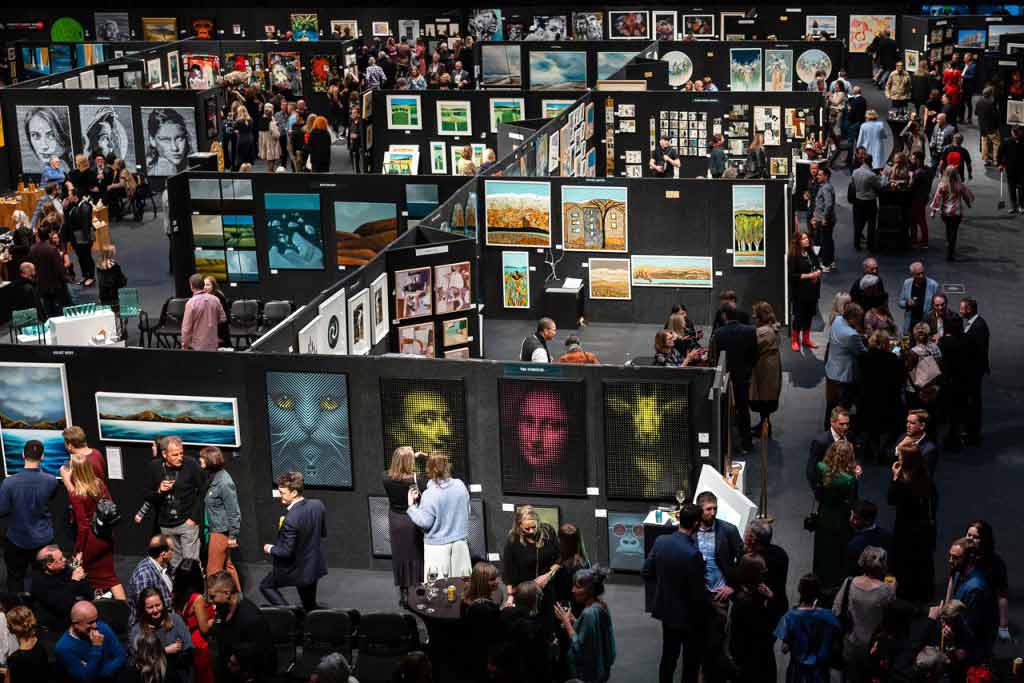Art is a universal language that transcends boundaries, and for many Australians, it holds deep emotional and financial value. With its rich Indigenous heritage and thriving contemporary scene, Australia offers a vibrant and diverse art market. Whether you’re a seasoned collector, an emerging enthusiast, or simply art-curious, this guide provides practical insights to help you navigate the Australian art world.
The Australian Art Market
Australia’s art market has gained significant momentum in recent years, with strong local support and increasing global recognition. From powerful Aboriginal artworks and contemporary installations to traditional landscapes and modern portraits, Australia showcases an impressive range of styles, mediums, and cultural stories.
To get a sense of this diversity, check out these well-known Australian artists across different styles and price points:
- Emily Kame Kngwarreye – one of Australia’s most celebrated Indigenous artists
- Ben Quilty – known for expressive, impasto portraits and socio-political commentary
- Del Kathryn Barton – vibrant, surreal works blending pop culture and fine art
Buying Artwork: Pros and Cons
Pros:
Diverse Selection
Australia’s art scene is incredibly varied, offering everything from traditional dot paintings and watercolours to large-scale contemporary works and sculpture.
Support for Local Artists
Purchasing Australian art supports both emerging and established artists, contributing to the cultural landscape and helping sustain creative communities.
Potential Investment Value
Certain artworks can appreciate significantly over time. A carefully selected collection may deliver strong returns—alongside aesthetic enjoyment.
Cultural Significance
Many Australian pieces, especially Indigenous works, carry deep cultural meaning. Owning such art fosters a richer appreciation of Australia’s heritage and stories.
Cons
High Demand
Sought-after artists and limited-edition works can sell fast, especially at major exhibitions or auctions. Quick decision-making is often required.
Pricing Complexity
Artwork pricing varies significantly based on the artist’s reputation, uniqueness of the piece, demand, and recent trends. Emerging artists may price lower to gain attention, while blue-chip names can command steep figures.
Risk of Forgeries
As the market grows, so too does the risk of inauthentic or misrepresented pieces. Ensure you purchase from reputable galleries, directly from artists, or through verified dealers. When in doubt, seek advice from a professional valuer or appraiser.
Tips for Buying Art in Australia
- Do Your Research
Explore art fairs, exhibitions, and galleries across the country, from Sydney Contemporary and The Other Art Fair to small regional galleries. Learn about different styles, mediums, and artists. - Network with the Community
Get to know artists, gallerists, and fellow collectors. Attend artist talks and local events to stay informed and inspired. - Set a Budget
Factor in extra costs like shipping, insurance, and framing. Don’t feel pressured to spend big, there are plenty of affordable, quality art available from emerging talents. - Verify Authenticity
Ask for provenance documents and certificates of authenticity, especially with Indigenous art. Provenance can greatly affect an artwork’s value. - Build Relationships with Galleries
Don’t be intimidated; galleries can offer early access, discounts, and expert guidance. Regular visits and conversations with gallery staff can open exciting doors.
Selling Artwork: Pros and Cons
Pros
Financial Return
Selling appreciated artworks can offer a solid return. Monitor auction results from houses like Sotheby’s Australia, Leonard Joel, or Menzies Art Brands to understand market demand.
Refreshing Your Collection
Letting go of pieces can make space for new artistic explorations, keeping your collection dynamic and aligned with your tastes.
Supporting New Artists
By reselling, you can create a ripple effect by drawing attention to certain artists and allowing new collectors to engage with their work.
Community Engagement
Selling art often leads to connections with other enthusiasts, curators, and collectors, deepening your understanding of the art world.
Cons
Emotional Attachment
It’s not always easy to part with a beloved piece especially if it holds sentimental value or if you’ve developed a connection with the artist.
Market Fluctuations
Like any market, the value of art can rise or fall based on trends, economic conditions, or changing tastes. Timing can be everything.
Selling Costs
Galleries and auction houses often take a 30–50% commission. Consider transportation, insurance, and promotional costs when calculating your net return.
Tips for Selling Art in Australia
- Evaluate the Market
Look into current sales data and trends. Consult with gallery owners, art consultants, or appraisers to gauge your piece’s value and sale potential. - Document Everything
Maintain paperwork like receipts, certificates, and provenance records. These not only confirm authenticity but also boost buyer confidence. - Use Multiple Sales Channels
You can sell through physical galleries, art fairs, online marketplaces like Bluethumb or Art Lovers Australia, or auction houses. Each option has different audiences and advantages. - Promote Effectively
Use social media, professional photographs, and detailed descriptions to showcase your art. Tell a compelling story—buyers connect with the narrative behind the work.
Final Thoughts
Buying and selling artwork in Australia can be both fulfilling and financially rewarding. With a bit of research, relationship-building, and market awareness, you can successfully navigate the scene and support the incredible talent that calls Australia home. Whether you’re acquiring a striking new piece or passing one along, every step in your art journey contributes to the evolving story of Australian culture.
